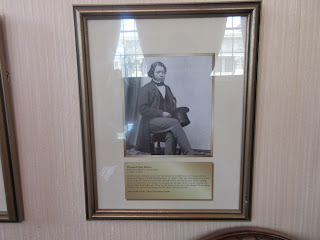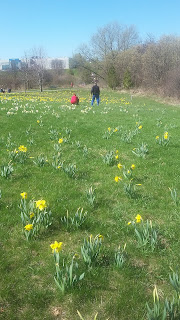St. Lawrence Hall was built in 1850 as a meeting place for public
gatherings, concerts and exhibitions. Restored to its original grandeur
in 1967, the Hall with its three major rooms continues to serve as a
breathtaking venue to inspired special occasions certain to make a
lasting impression.
St. Lawrence Hall is a meeting hall in Toronto, Ontario, located at the corner of King Street East and Jarvis Street. It was created to be Toronto's public meeting hall home to public gatherings, concerts, and exhibitions. Its main feature was a thousand-seat amphitheater. For decades the hall was the centre of Toronto's social life, before larger venues took over much of this business. Today the hall continues as a venue for events including weddings, conferences, and art shows.
The location was previously part of the Market Square area, and had been the site of the first permanent market buildings. A fire in 1841 caused the northern portions of this building to be pulled down, leading to the building of the current St. Lawrence Market in 1850 a block south at what was then Palace Street, and today known as Front Street. The vacated area at the corner of King and Jarvis was in the heart of the growing community. The Renaissance Revival style building was designed by William Thomas.
It was here that prominent politicians such as John A. Macdonald and George Brown, Fathers of Confederation, addressed the people of Toronto. It was the main venue for musicians and other performers who came to the city. The lower levels were integrated into the market and were home to stores and businesses.
A third storey section of the building was known as St. Patrick Hall, an important meeting place for the Irish Catholic Benevolent Union.
William Thomas (c.1799-26 December 1860) was an architect of both England and Canada. He immigrated to Toronto with his wife and 10 children from Leamington Spa, England due to the economic crisis in 1837. After his emigration to Toronto, his career as a city engineer and architect prospered. One of his well-recognized successful works in architecture after his settlement is St. Lawrence Hall.
Thomas’ work was undoubtedly influenced by 16th-century Italian Renaissance architecture, the central Roman temple that consists of the pediment, four engaged Corinthian columns, and the three arches underneath very closely resemble the work of an Italian Classist architect, Andrea Palladio.
A public hall flanked by shops was built in 1831 as part of a rectangle of buildings making up York's market square. When York was incorporated as Toronto in 1834, the hall became the City Hall for a decade until its successor was built nearby. After the great fire of 7 April 1849 burned down much of the town centre, the area was revitalized by the construction of St. Lawrence Hall.
In 1967 it was designated a national historic site and restored as part of a centennial project in the City of Toronto.
In 1971 a planning board report and consultant recommended to the city that the South Market be demolished. But adamant citizen groups fought back and persuaded the city to renovate.
One wall of the original jail remains in the basement, says historian Bell, who is thankful the South Market and St. Lawrence Hall didn’t become prey to the “urban knockdown in the 1950s and 1960s” when “25,000 historical buildings” in the city were torn down.
In September 1964, the Ontario Municipal Board approved the city’s
$1.2-million plan to purchase land around the Hall with $750,000 of that
amount earmarked for the restoration of old building.
The St. Lawrence Hall was constructed over the period 1850-1851 on a site at the southwest corner of King and Jarvis Sts. that at the time was in the very heart of the young city.
St. Lawrence Hall is a meeting hall in Toronto, Ontario, located at the corner of King Street East and Jarvis Street. It was created to be Toronto's public meeting hall home to public gatherings, concerts, and exhibitions. Its main feature was a thousand-seat amphitheater. For decades the hall was the centre of Toronto's social life, before larger venues took over much of this business. Today the hall continues as a venue for events including weddings, conferences, and art shows.
The location was previously part of the Market Square area, and had been the site of the first permanent market buildings. A fire in 1841 caused the northern portions of this building to be pulled down, leading to the building of the current St. Lawrence Market in 1850 a block south at what was then Palace Street, and today known as Front Street. The vacated area at the corner of King and Jarvis was in the heart of the growing community. The Renaissance Revival style building was designed by William Thomas.
It was here that prominent politicians such as John A. Macdonald and George Brown, Fathers of Confederation, addressed the people of Toronto. It was the main venue for musicians and other performers who came to the city. The lower levels were integrated into the market and were home to stores and businesses.
A third storey section of the building was known as St. Patrick Hall, an important meeting place for the Irish Catholic Benevolent Union.
William Thomas (c.1799-26 December 1860) was an architect of both England and Canada. He immigrated to Toronto with his wife and 10 children from Leamington Spa, England due to the economic crisis in 1837. After his emigration to Toronto, his career as a city engineer and architect prospered. One of his well-recognized successful works in architecture after his settlement is St. Lawrence Hall.
Thomas’ work was undoubtedly influenced by 16th-century Italian Renaissance architecture, the central Roman temple that consists of the pediment, four engaged Corinthian columns, and the three arches underneath very closely resemble the work of an Italian Classist architect, Andrea Palladio.
A public hall flanked by shops was built in 1831 as part of a rectangle of buildings making up York's market square. When York was incorporated as Toronto in 1834, the hall became the City Hall for a decade until its successor was built nearby. After the great fire of 7 April 1849 burned down much of the town centre, the area was revitalized by the construction of St. Lawrence Hall.
In 1967 it was designated a national historic site and restored as part of a centennial project in the City of Toronto.
In 1971 a planning board report and consultant recommended to the city that the South Market be demolished. But adamant citizen groups fought back and persuaded the city to renovate.
One wall of the original jail remains in the basement, says historian Bell, who is thankful the South Market and St. Lawrence Hall didn’t become prey to the “urban knockdown in the 1950s and 1960s” when “25,000 historical buildings” in the city were torn down.
Around
1900, the ground floor was home to a branch of the Dominion Bank and a
stove and furnce store. The arched entrance at the centre led to a small
shopping arcade. Image: Toronto Public Library, E 10-79.
As planned by architect Thomas, the
ground floor was leased to retailers. There were stores on either side
of the indoor shopping arcade and also facing the surrounding streets.
Early photos show gigantic signs for
businesses such as the Toronto Tea Company and Graham’s Temple of
Fashions crowding the fine, if eccentric, architectural detailing.
Much of the space on the east side of the
building was leased to the Irish Catholic Benevolent Union, which
advertised its presence with a sign for “St. Patrick’s Hall.”
Among the notable features of the
exterior are columns that are a close copies of those used on the
ancient Temple of Jupiter Stator in Rome. ( Survivor Style)
Closer to the ground, on King
Street, a number of carved men’s faces peer out from the sides of the
building, representing fictional deities of Lake Ontario, the Niagara,
and St. Lawrence rivers.
Near the roof, also facing King Street,
the figure of Britannia, an Indigenous man with bow and quiver, and the
crest of the Royal Arms of England form the City of Toronto coat of
arms. The city’s motto at the time, “Industry, Intelligence, Integrity,”
is carved below.
The building was topped with a public
clock connected to a 966-kilo bell that chimed the hour. In the 1850s,
this timekeeping device was a critically important piece of
infrastructure.
Before affordable watches, the clocks at
St. Lawrence Hall and Union Station were among the few ways of knowing
the time of day on the street with any degree of accuracy.
Scientists at the observatory at
University College send a signal to the town’s fire halls when the sun
approached its peak at 11:55 am.
The St. Lawrence Hall was constructed over the period 1850-1851 on a site at the southwest corner of King and Jarvis Sts. that at the time was in the very heart of the young city.






























































